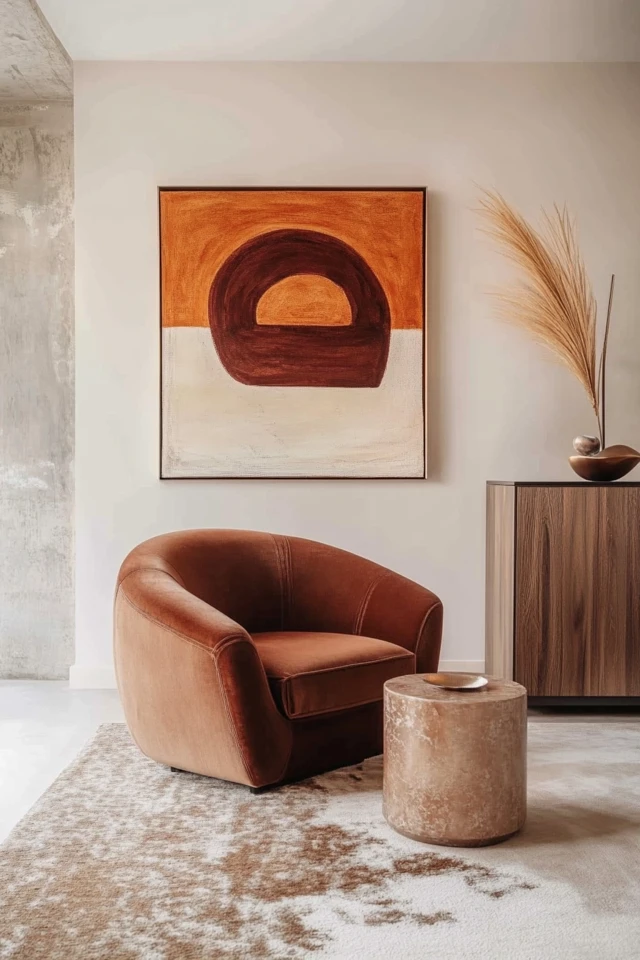Mid-century modern design is famous for its clean lines, organic shapes, and bold use of materials. While straight, minimalist forms dominate the style, curved furniture plays a crucial role in softening the overall look and adding an inviting, playful vibe. Curved chairs, sofas, and tables inject personality into a space while paying homage to the fluidity and innovation of mid-century design.
I remember when I first fell in love with the idea of curved furniture. I spotted a mid-century modern kidney-shaped coffee table at a vintage store. Its fluid silhouette immediately softened the sharp edges in my living room, transforming the space into something warmer and more dynamic. Since then, I’ve embraced curved pieces as a way to add character and balance to mid-century modern interiors.
In this post, I’ll share 10 creative ways to incorporate curved furniture into your mid-century modern design, blending retro charm with contemporary elegance.
Why Use Curved Furniture in Mid-Century Modern Design?
- Softens Straight Lines: Curved pieces break up the dominance of angular forms, creating balance.
- Adds Movement: Organic shapes give a sense of flow and dynamism to a room.
- Timeless Appeal: Curved furniture captures the retro vibe of the 1950s and 60s while feeling fresh and relevant today.
- Welcoming Atmosphere: Rounded edges make furniture feel cozy and approachable.
1. Make a Statement With a Curved Sofa
Why It Works:
A curved sofa instantly becomes the focal point of any living room, adding drama and elegance. Its shape encourages conversation by creating an intimate, semi-circular seating arrangement.
How to Style It:
- Pair a curved sofa with a low-profile, straight-edged coffee table to create contrast.
- Position it in an open-concept space to define the seating area without the need for walls.
- Add throw pillows in retro patterns or muted tones to highlight the sofa’s shape.
Pro Tip: Choose a sofa in a classic mid-century color like mustard, teal, or cream for an authentic look.
2. Incorporate a Kidney-Shaped Coffee Table
Why It Works:
Kidney-shaped coffee tables are a hallmark of mid-century modern design, offering a functional yet sculptural element.
How to Style It:
- Place it in front of a straight or curved sofa to add contrast.
- Decorate it sparingly with a vase, books, or a geometric tray to keep the focus on its shape.
- Pair it with a plush area rug to emphasize the organic flow of the space.
Pro Tip: Look for kidney-shaped tables in natural wood finishes like walnut or teak to stay true to mid-century aesthetics.
3. Add Curved Armchairs for Accent Seating
Why It Works:
Curved armchairs, like the famous Womb Chair or the Saarinen Executive Chair, combine comfort with striking design.
How to Style It:
- Use them as accent chairs in a reading nook or next to a sleek console table.
- Position two curved chairs opposite a sofa to create a balanced seating arrangement.
- Choose upholstery in bold, retro colors or soft, neutral tones to match your space.
Pro Tip: Pair curved chairs with a small, round side table for a cohesive look.
4. Opt for a Round Dining Table
Why It Works:
Round dining tables encourage conversation and eliminate sharp edges, making them perfect for mid-century inspired dining spaces.
How to Style It:
- Pair the table with iconic mid-century dining chairs, like Eames Molded Plastic Chairs or wishbone chairs.
- Add a pendant light with a curved silhouette, such as a globe or dome shape, to complement the table’s form.
- Use a textured area rug beneath the table to define the dining area.
Pro Tip: Choose a table with a pedestal base for a sleek, minimalist look.
5. Bring in Curved Shelving Units
Why It Works:
Shelving with rounded edges or asymmetrical curves adds visual interest while maintaining functionality.
How to Style It:
- Use curved shelves as a standalone statement piece for books, plants, or decor.
- Position them in a corner to soften the angular geometry of the room.
- Pair with decor items like vases or sculptures that echo the rounded shapes.
Pro Tip: Opt for a mix of open and closed storage to keep the design balanced and practical.
6. Experiment With Circular Ottomans and Poufs
Why It Works:
Round ottomans and poufs are versatile, space-saving additions that add softness to any seating area.
How to Style It:
- Use a circular ottoman as a coffee table alternative in small living rooms.
- Position a pair of poufs under a console table for extra seating that’s easy to tuck away.
- Choose textures like boucle or leather to add depth and dimension.
Pro Tip: Pair a round ottoman with a curved sofa for a harmonious look.
7. Incorporate Arched Headboards in the Bedroom
Why It Works:
An arched or curved headboard brings a touch of retro glamour to the bedroom while softening the overall design.
How to Style It:
- Choose a headboard in velvet or tufted fabric for added texture.
- Pair it with sleek, mid-century modern nightstands to keep the look balanced.
- Use bedding in muted tones or bold geometric patterns to tie the design together.
Pro Tip: Consider a platform bed with tapered legs for a complete mid-century modern look.
8. Use Round Mirrors as Wall Decor
Why It Works:
Round mirrors are an easy way to introduce curved elements without taking up floor space.
How to Style It:
- Hang a large, round mirror above a credenza or fireplace for a statement piece.
- Group smaller round mirrors in varying sizes for a playful, retro-inspired gallery wall.
- Choose frames in brass, black, or natural wood to complement your mid-century palette.
Pro Tip: Position a round mirror near a window to reflect natural light and brighten the room.
9. Opt for Curved Lighting Fixtures
Why It Works:
Mid-century modern lighting often features curved silhouettes, like globe pendants, arc floor lamps, and sculptural sconces.
How to Style It:
- Place an arc lamp behind a sofa to create a cozy reading nook.
- Use globe pendants above a dining table for a soft, diffused glow.
- Add wall sconces with rounded shades for subtle accent lighting.
Pro Tip: Stick to finishes like brass, chrome, or matte black for an authentic mid-century vibe.
10. Balance Curves With Straight Lines
Why It Works:
Mid-century modern design thrives on the balance between angular and organic forms.
How to Style It:
- Pair curved furniture with straight-lined pieces, like a rectangular credenza or linear bookshelf.
- Use geometric patterns in rugs or throw pillows to contrast with rounded furniture.
- Incorporate vertical elements, like tall lamps or plants, to anchor the design.
Pro Tip: Create harmony by using a consistent color palette that ties together the curves and straight lines.
Picture Gallery
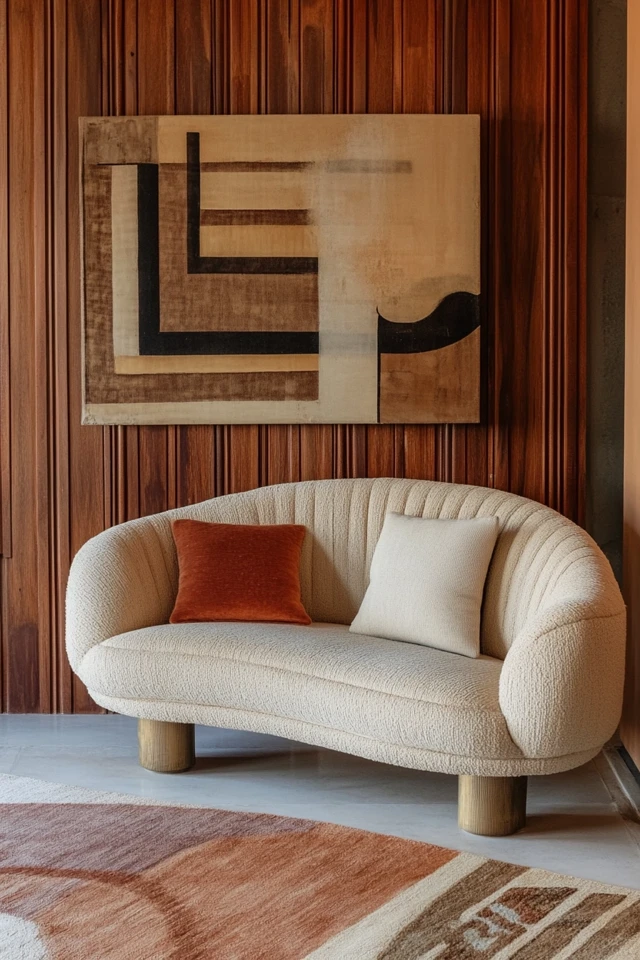
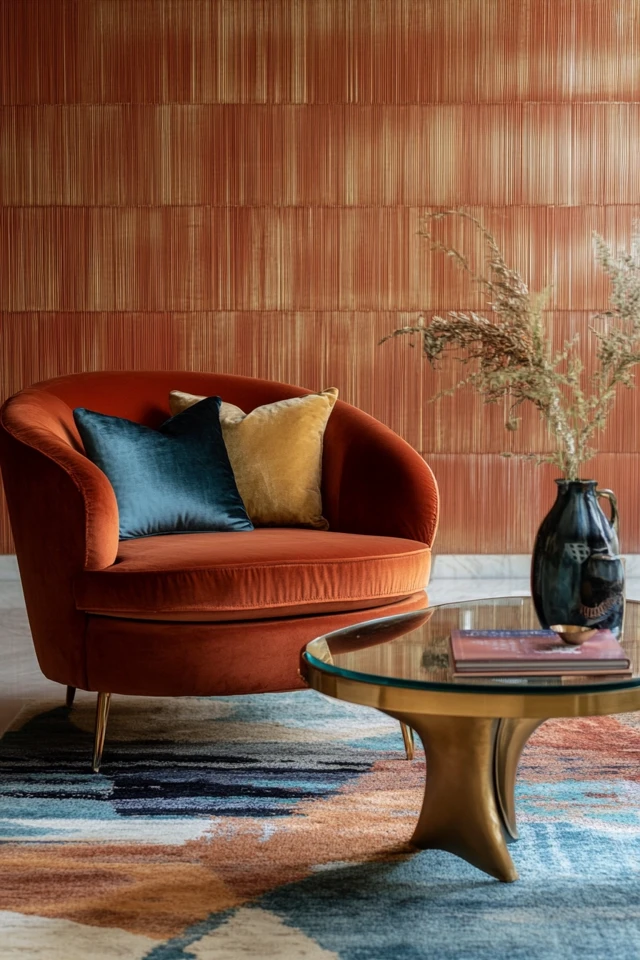
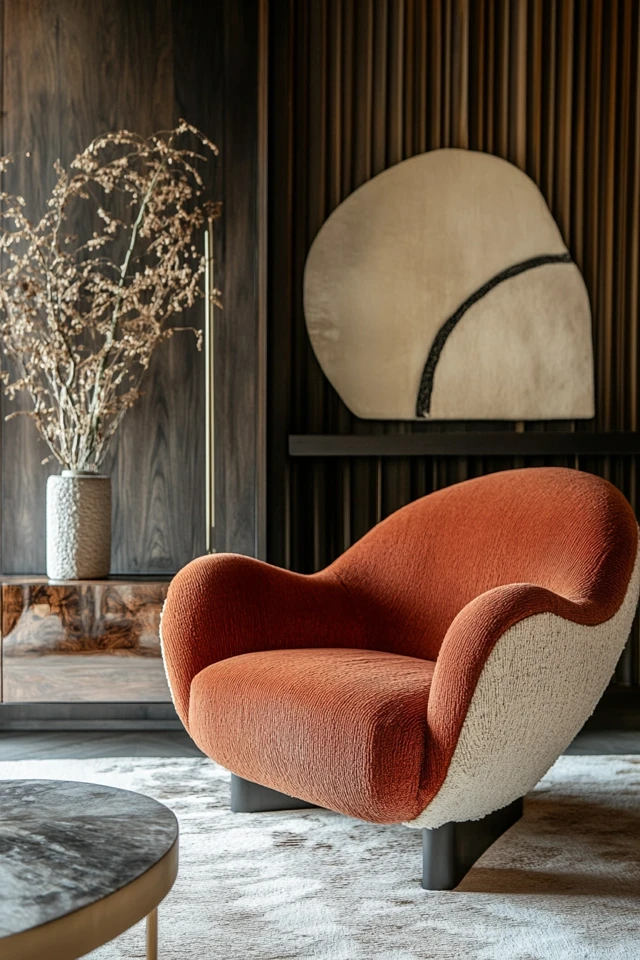
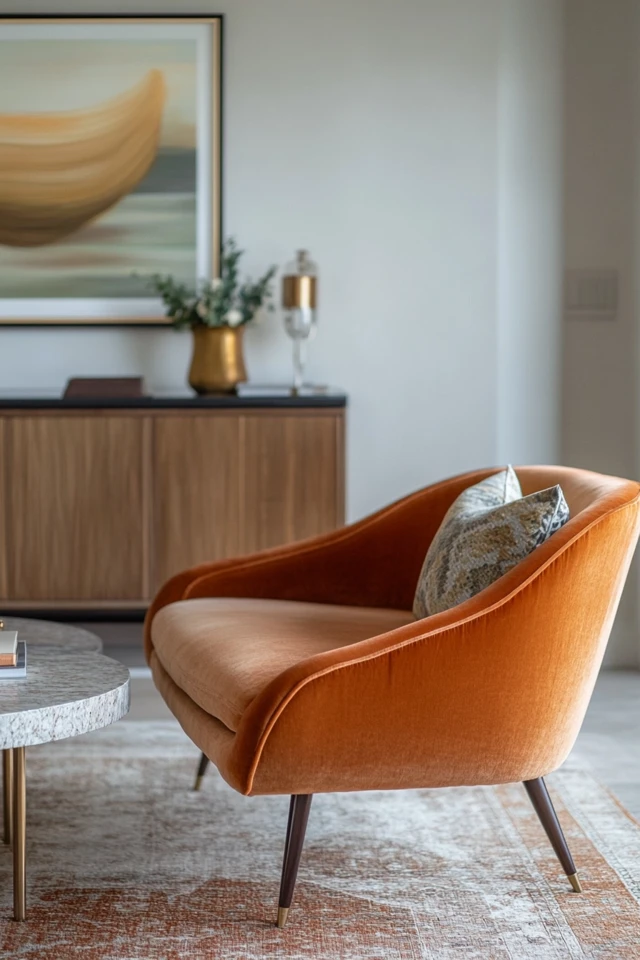
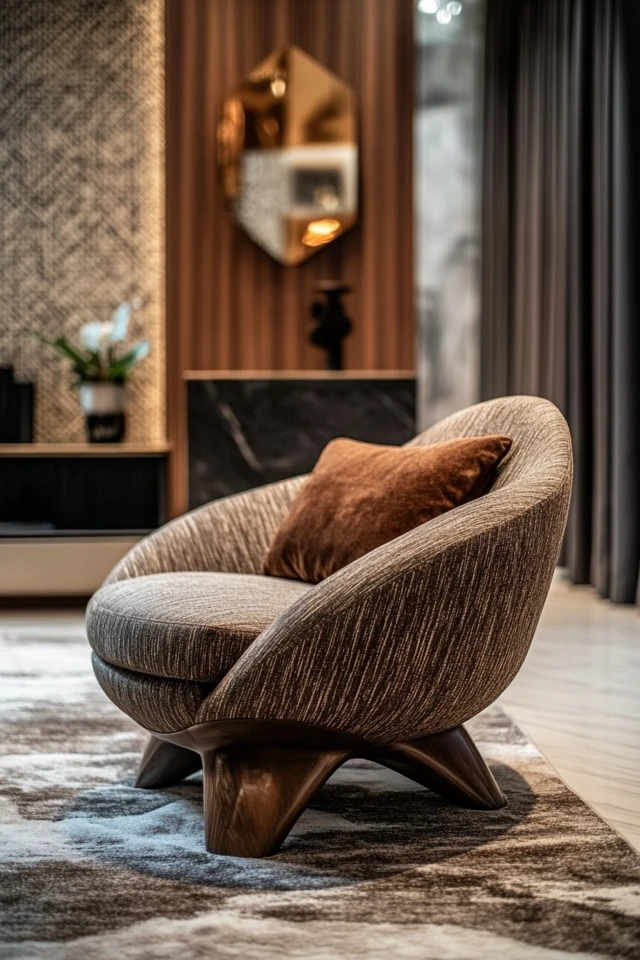
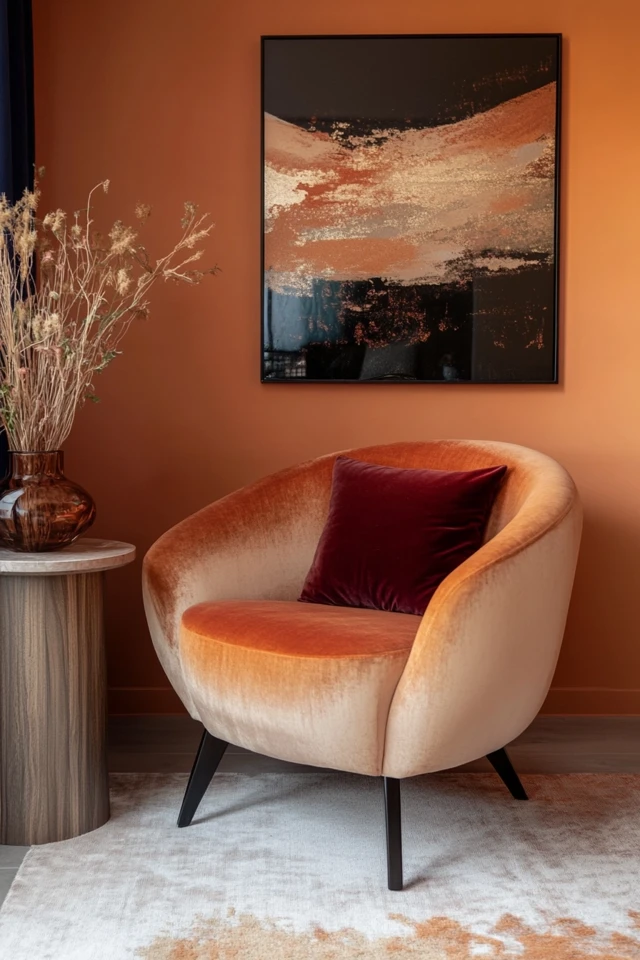
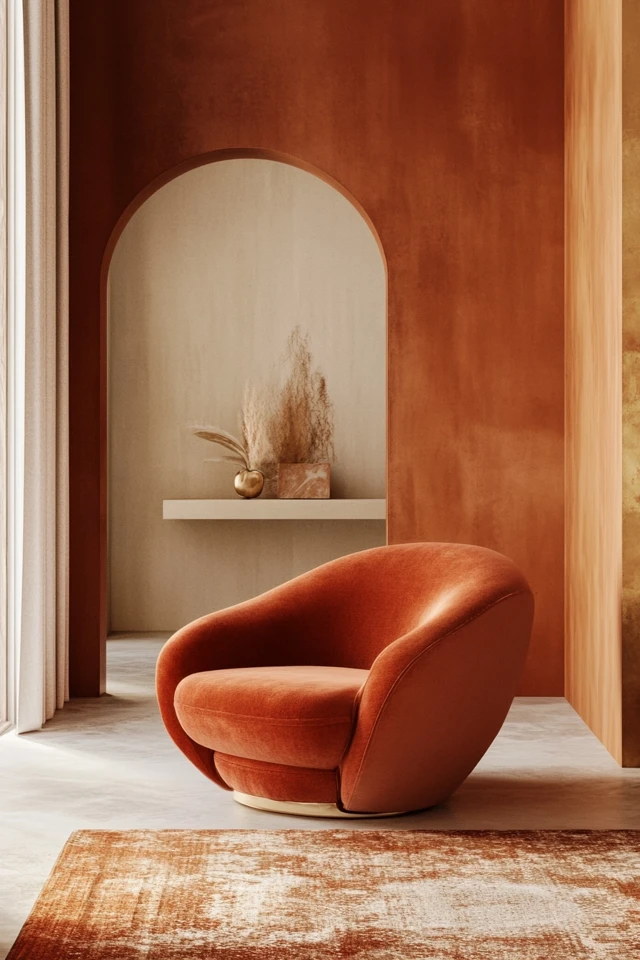
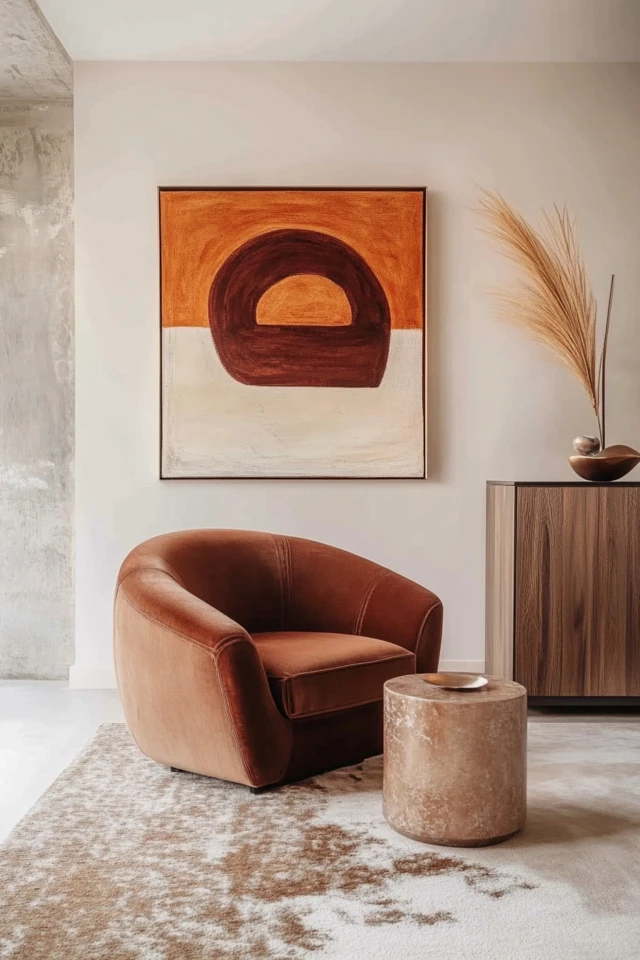
Conclusion
Curved furniture is an essential element of mid-century modern design, adding softness, movement, and retro charm to any space. From statement-making curved sofas to versatile round ottomans, these pieces bring a playful yet sophisticated edge to your home. By thoughtfully incorporating curved elements and balancing them with mid-century modern staples, you’ll create a space that’s both timeless and inviting.
Whether you’re just starting to explore mid-century modern design or looking to refresh your decor, let the power of curves transform your space into a dynamic, stylish haven.
FAQs
1. Why is curved furniture popular in mid-century modern design?
Curved furniture reflects the organic shapes and playful innovation that define mid-century modern aesthetics.
2. Can I mix curved and straight furniture in the same space?
Absolutely! Balancing curves with straight lines creates visual interest and a cohesive look.
3. What colors work best with curved mid-century furniture?
Earthy tones like walnut, mustard, olive, and teal, as well as neutral shades like cream or gray, work beautifully.
4. Are curved furniture pieces practical for small spaces?
Yes! Curved furniture often takes up less space visually and can make small rooms feel more open and dynamic.
5. Where can I buy curved mid-century modern furniture?
Look for authentic vintage pieces at flea markets and antique stores or explore modern replicas from retailers like West Elm, Article, and CB2.

